Safari in Blackbuck National Park , Velavadar
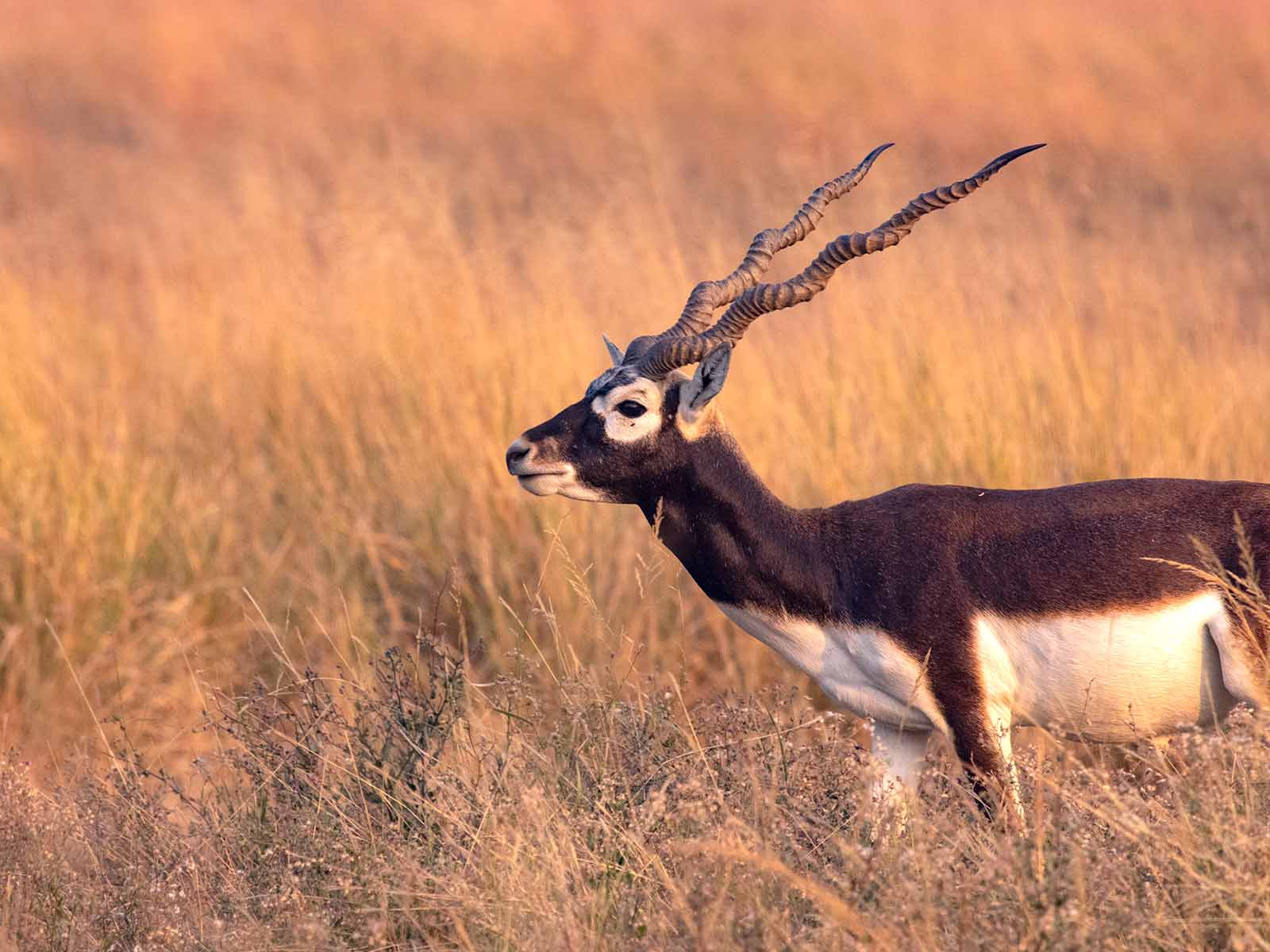
Blackbucks are antelopes found in India. Once very numerous they are now reduced to a few thousands and are found in remote sanctuaries. Blackbuck national park is one of their strongholds but even here their numbers are dwindling. The iconic horns of the male blackbucks make them a stunning beauty.
In our Gujarat Road trip, our second stop was at Blackbuck National Park. Blackbuck National Park is situated in Velavadar which is situated around 150 kms from Thol Bird Sanctuary. Blackbuck National Park is a small grassland of just 34 sq.km surrounded by agricultural lands. After birding in Thol bird sanctuary we drove to Blackbuck National Park. We thought to take rest once we reached the forest guest house where we had booked our stay. There was no hotel to stay near the national park except for the forest guest house, hence the place was not commercialized. Once we took the road to the National Park there was no traffic and we saw a family of Common Cranes on the roadside fields. We stopped to admire them and searched for Demoiselle Cranes but couldn’t find any. Within few minutes I saw a beautiful male blackbuck staring at us amidst the grasses. We were very thrilled to see wildlife at the start of the road to the Blackbuck National Park and that too in mid-noon.
We reached the Forest Entry Office and saw many guides waiting for the evening safari. We were in dilemma whether to do the evening safari or take rest and start fresh next day. But we were very eager to see the terrain of this place as this is one of the last remaining homes for the rare Lesser Florican, Hyena and Blackbuck. So we didn’t want to waste an evening by sitting in a room. We quickly got refreshed and went to the booking counter. Only one foreigner was standing in the counter to get ticket. I looked around searching for notice board to check entry ticket price. I was surprised to see a board with all writings in Gujarati even the numbers. In a national park where foreign tourists were coming , there was no notice board in English and not even in Hindi. The foreigner had a personal guide, so the guide paid the fee as he knew the fee structure of the national park. When my turn came I just gave the big 2000 Rupees to avoid confusion. The forest official gave me a printed receipt and I understood the fee structure. The big advantage in the safari was we can ride in our own car inside the park but with a guide. As we didn’t do any pre-arrangement for guide, the forest official decided one guide and called him to take us for the safari.
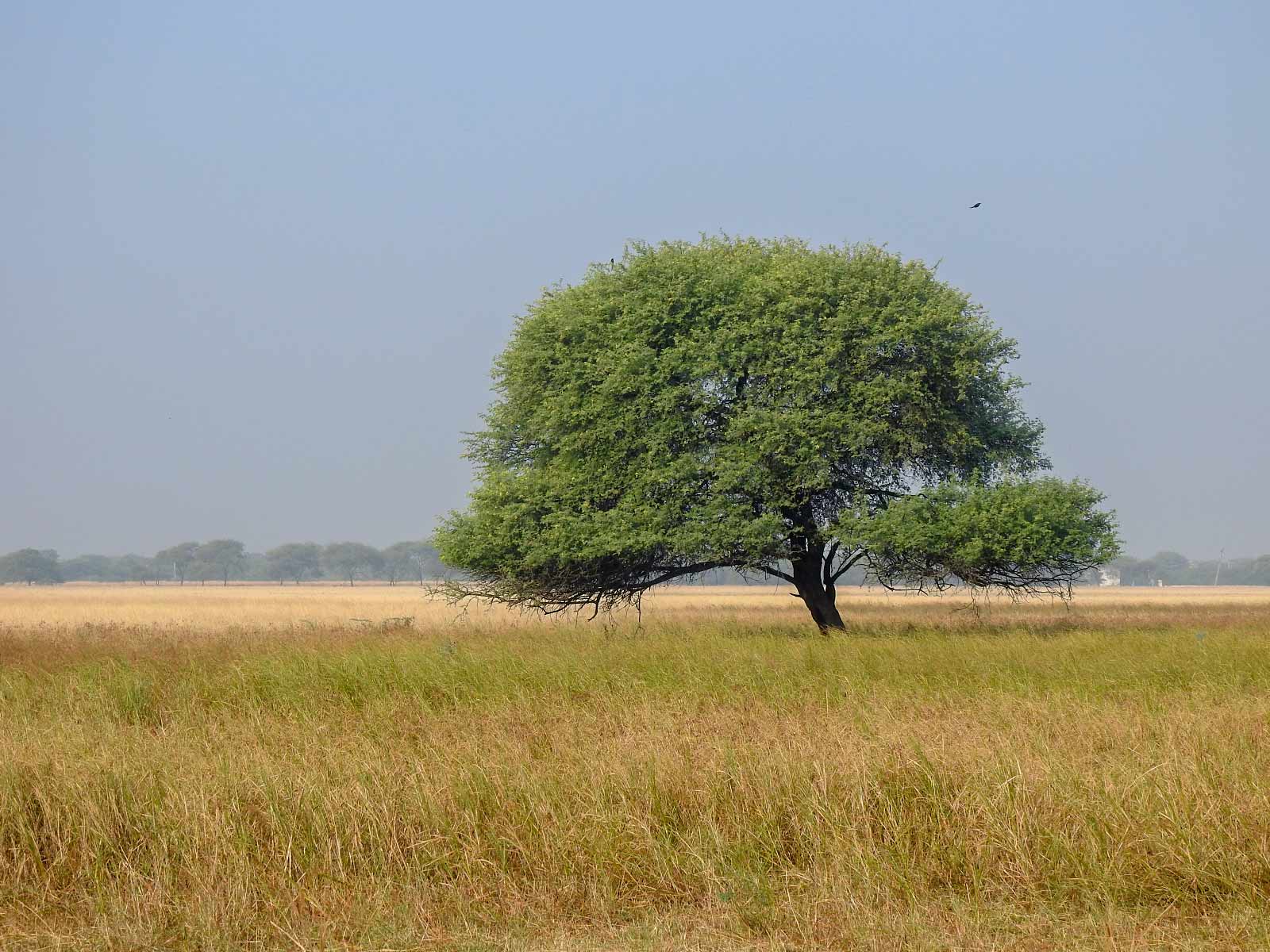
Grasslands are unique wildlife habitats. Except fora few scattered trees the view is unrestricted. This means that prey such as blackbucks have little places to hide. Open grassland predators such as the cheetah is now extinct in India but the co-evolution with blackbucks have made blackbucks the fastest animal in India. They can reach 80 kmhr in speed !
The first step when going with a guide is to mention your requirement, otherwise they will just show the common or most sought one like in Tiger Sanctuary just Tigers. So we told our guide that our wish was to see Hyena and Raptors and any other mammals. As there were less tourists , the guides decided the routes like we could give each safari group enough space. First we went to the Wetland section. The Gadwalls, Northern Shovelers were in good number but Common pochard was in distance. The Dalmatian pelicans were circling in the sky and landed on the water gracefully while we were watching. In South India only Spot-billed pelicans are common, so we were eager to see Dalmatian and Great white pelicans. In this Gujarat road trip so far we had seen only Dalmatian pelicans. Few Greylag geese and Greater flamingoes were also there. But the sighting that surprised us in this wetland section was the Mudskippers. We had seen mudskippers only in intertidal habitats , so we were very surprised to see them in a small puddle of water opposite to the wetland. The guide couldn’t understand why we were so excited for seeing these creatures.

Mudskippers were the last thing we would have expected in a bone dry environment we were witnessing. The grasses were dry and the roads were dusty but out of nowhere in a small puddle of water these little fishes were hanging on. When we enquired about the water we came to know that the entire place is part of a tidal zone of Gulf of khambhat and seasonally it gets flooded.
He told us they were eaten by local people and wild boar also loves these mudskippers. We went to the other end of the park and enjoyed the grassland view. We heard continuous calls of larks and they were all just feeding on the pathway. When the car went near they moved just few steps ahead and we moved a little, they moved a little. We just stopped and watched the quick movements of these larks. Then in a blink of the eye they flew away. The guide showed us the den of hyena where it was frequently spotted even with cubs. We didn’t have luck to see the hyena in that safari. We went to the watch tower and saw all the birds coming back to the sanctuary. We enjoyed the sound and sight of families of common cranes coming back in the twilight. We finished the safari with just common sightings but we enjoyed the place.
Harriers in Velavadar
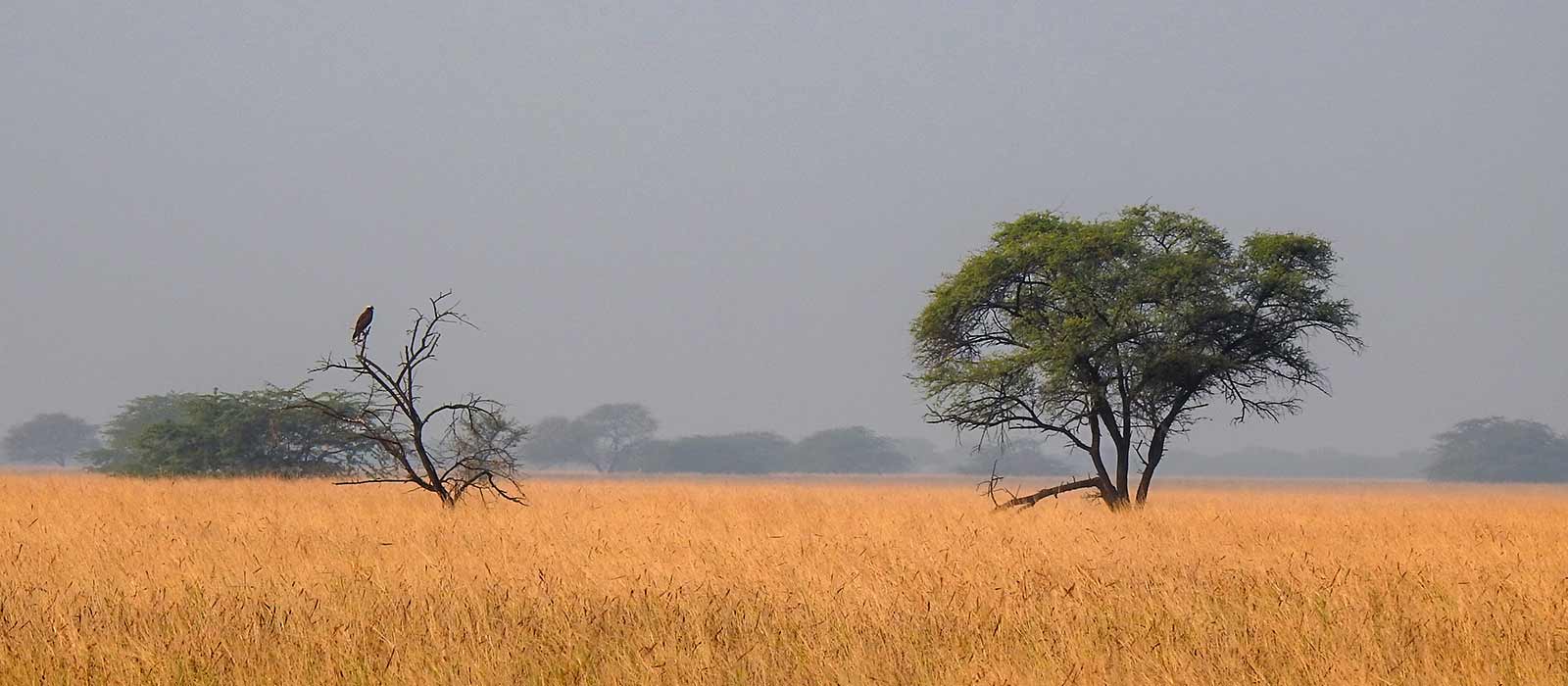
A western marsh harrier was scanning the grasslands. We travel for sights like these. These visuals give you a feel of how the original lands would have looked like and how a harrier is a king of it’s domain.
Next day we eagerly started our morning safari. The Common Cranes were starting their day and they all were leaving the park. It was lovely to see the sunrise amidst grasslands with so many birds activities. The only thing that bothered us was the cut grasses inside the park. There was even a tractor going here and there inside the park. The local ladies were also cutting and taking the grasses for their use. We asked the guide what was all that about inside a national park. The guide was not very comfortable in Hindi, they were all comfortable in their mother tongue Gujarati. So with our half-baked Hindi knowledge, we understood that the park had given lease to the local people for grass cutting so that they can gain something from the park. We were very shocked to hear this as this is one of the last remaining places for many endangered species.
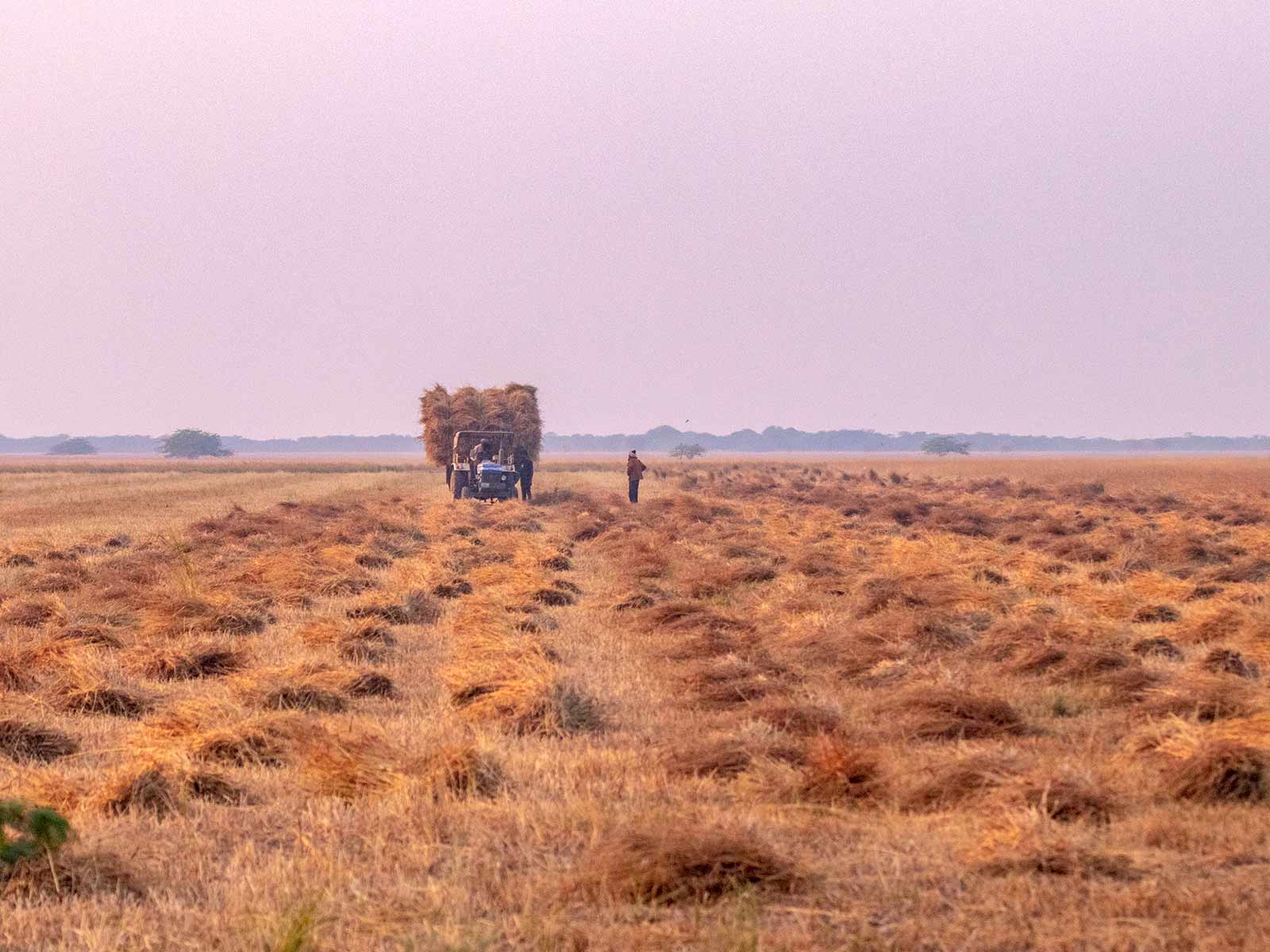
How much more greedier can a human go ? This place is one of the last remaining places where animals roam freely but here also the entire grass was being “harvested” by the “local people” for money. The guide explained us all the nuances of local profiteering at the expense of wildlife in the name of sustainable development . This grass cutting in the picture is at the exact place of a Hyena den. So much for sustainability ! The blackbuck population has literally dropped 40 % in the last decade and yet this is sustainability !
The Lesser florican nests on the ground amidst dense grass, how can they be protected when grass cutting was done using machines!! The Guide told us that the grass cutting was done only in this season as the grasses overgrow. We had come to that place just for a vist, so we didn’t know the thought of the local people about this national park. We later learnt the Lesser Florican population in this place is dwindling. According to me since the place was declared as national park , humans moving around inside the park like some agricultural field will affect the wildlife to some extent.

If the rental car company knew what we were doing with the car , I am sure we will be blacklisted !
While we were discussing about the grasses , we saw few Common Cranes inside the grasses and their actions were different. We stopped to look closer and realized there was a Indian Grey Wolf scaring those Common Cranes. The Common Cranes then flew away and the Indian Grey Wolf jumped through the grasses to catch up with another wolf who was hiding inside the grasses. The two wolves crossed the road and went to the other side. We watched them till we couldn’t find them amidst the grasses and continued our safari gleefully.
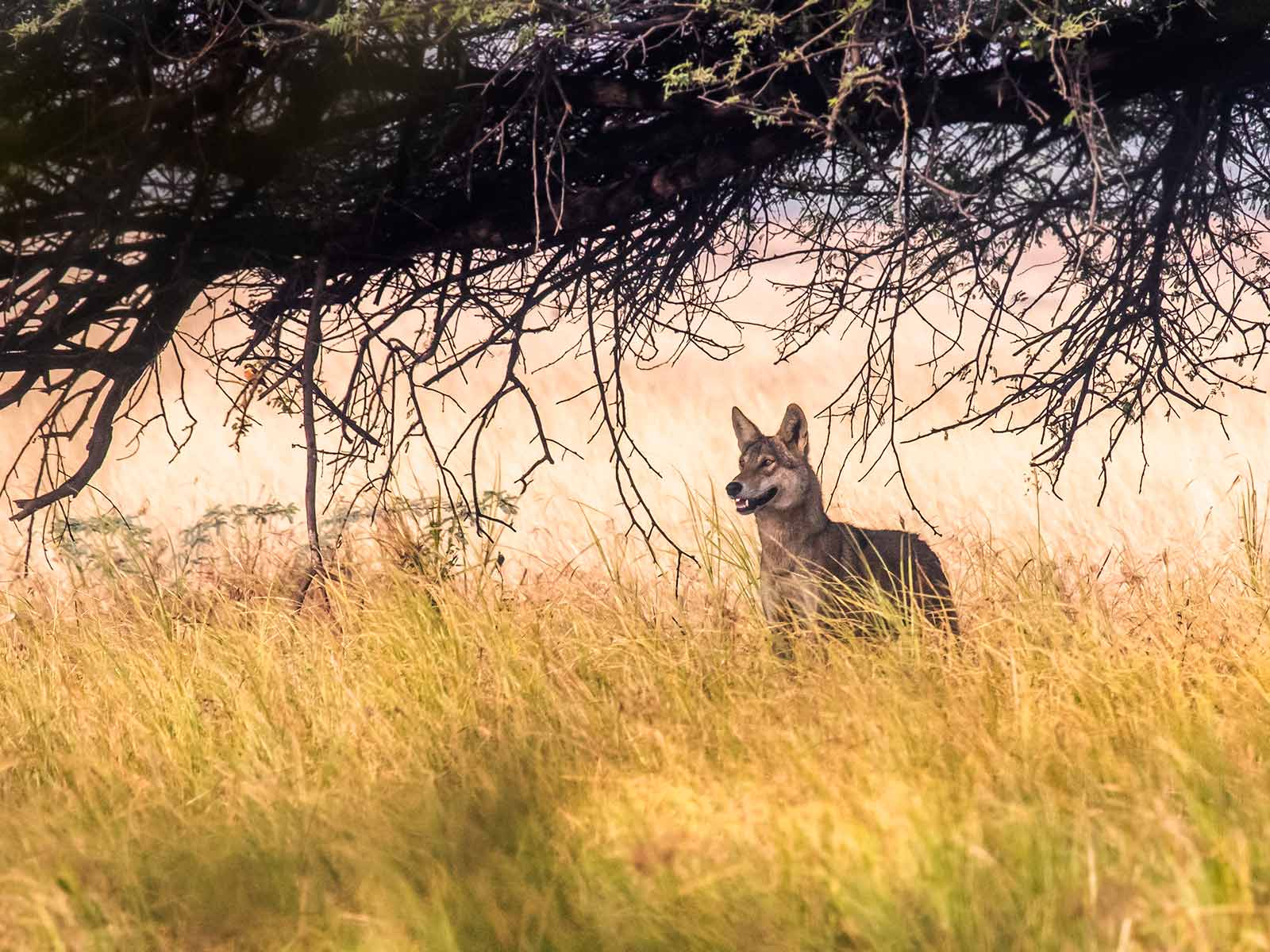
The beautiful Indian wolf. They are iconic of all the grassland species and personally for me the cutest. They were much smaller than how we expected them but their playful nature made us so happy.
The guides in this park were taking beautiful photos using their phone and binocular. This guide showed us some of his excellent captures of hyena and shared with us few of his wildlife encounters. We saw few harriers and while crossing another small puddle we heard a loud thudding sound. We found the source of sound to be from a Mama Wild boar with her few cubs. She was catching the mudskippers and her cubs followed around. We ended the morning safari happily after few other bird sightings.

Raptors were the reason we decided to go to Gujarat. Large eagles such as the Tawny eagle need huge open spaces and plentiful prey. In this trip we were so happy that eagles were much more casual than in other parts of India.
The Blackbuck National Park had numerous toothbrush plants and all had so many berries. The Starlings, House sparrows were having a feast of the berries and sat comfortably inside the dense cover of that tree. Their constant chit chatting made the place very vibrant with life. The guide told us that toothbrush berries were edible, so we also plucked few and tasted. I had eaten quite a lot of these berries by evening and started for our last safari in the Blackbuck National Park.

Salvadora-persica or Toothbrush tree is the other specialty of the grasslands. While the grass sustained the antelopes , the berries sustained the little birds. These little trees were ripe with red berries and we ourselves could not resist. They were indeed yummy 🙂
The evening light was very pleasant and the dried grasses all looked golden in color. We saw hundreds of blackbucks and the way they jumped while running was mindblowing. This was one of the most beautiful antelopes we had ever seen. We couldn’t take our eyes off from them. We saw two tawny eagles on the ground and they really glowed in the sunlight. When we crossed the hyena den we saw a Indian Grey Wolf, so we thought that was the Wolf Day and we were not going to see any hyena. After sometime we again saw a herd of Blackbuck but they looked very guarded. We then spotted two Indian Grey wolves among them lazily sitting , yawning and relaxing. We moved further and found two more wolves hiding inside the tall grasses. The wolves were in hunting mode and using different strategies to trap a blackbuck in the herd. We waited for sometime but the wolves maintained their position. The guide told us mostly they will hunt at dusk , so we proceeded further. We saw hundreds of Common Cranes pecking on the ground and many other larks, shrikes before returning back. Nearing the end of the safari we saw a male Montagu harrier who was gliding above the grassland and he turned his head to see us.
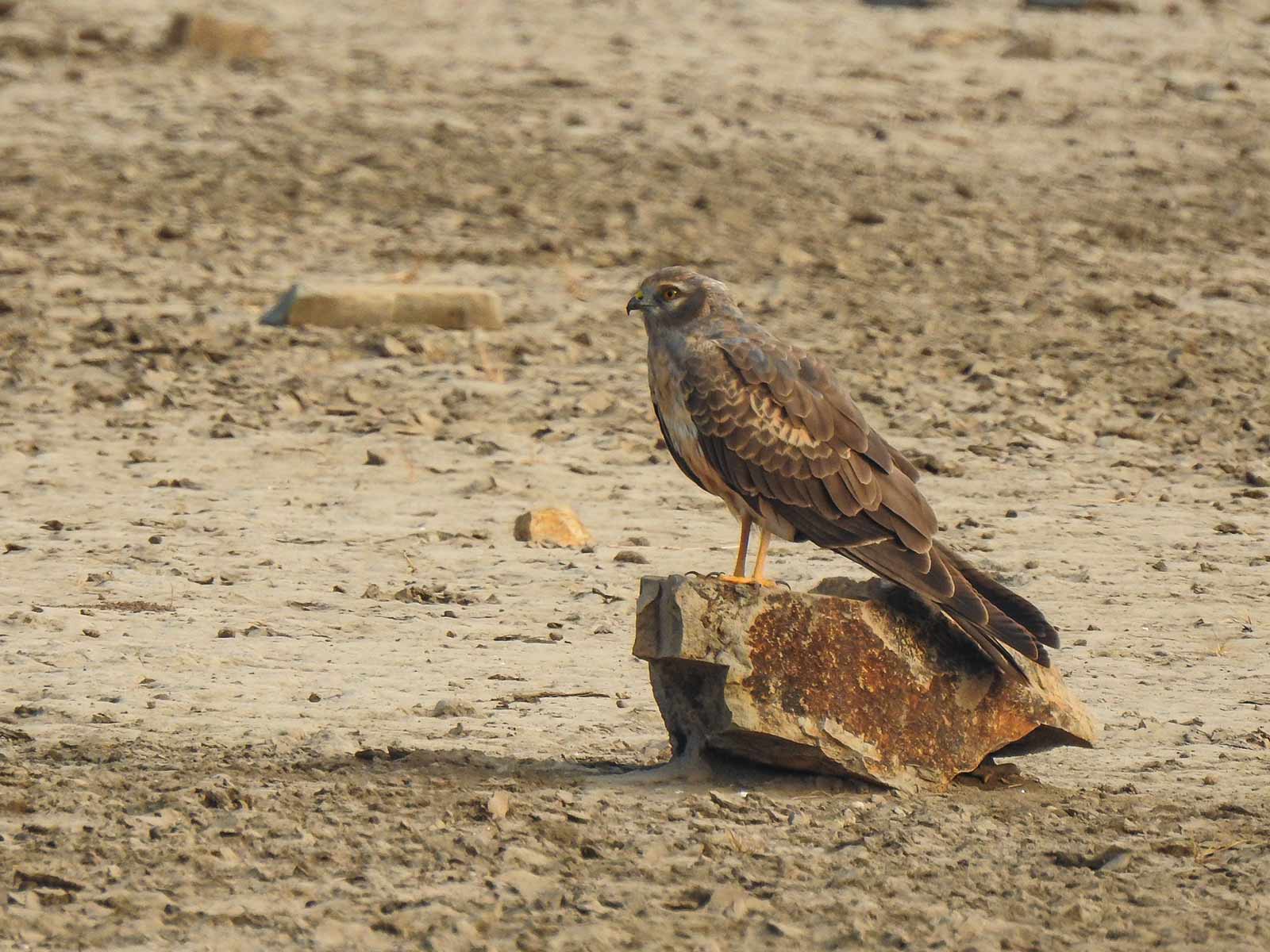
The Blackbuck national park has an unique spot where these migratory bird commune for the evening. Every morning these beautiful birds head out of the park in search of prey and by evening they come together to roost.
The bird looked very majestic in that unique terrain and with that beautiful scene we ended our final safari in the Blackbuck National Park. Even though we didn’t see Hyena in this trip, we decided to come back in April month when they can be sighted very frequently and that too with pups. So with some beautiful memories we bid adieu to Blackbuck National Park and got ready for our next stop – Nalsarovar wetlands.
Good
The Good part in Blackbuck National Park, Velavadar is the place is not yet commercialized. The local guides were very enthusiastic and had good knowledge about the wild animals. The Blackbucks, Common Cranes were in good numbers even in that very small national park.
Bad
The Bad part is the size of the national park. The park is just 34 sq.km which has to support Indian Grey Wolf, Hyena, Blackbuck and numerous bird species. The predator wild animals need much larger area to hunt and expand their generations. This national park may protect these species but to increase their numbers the size of the park is too small.
Ugly
The Ugly part is even in this small national park there are too many human interventions. This park has unique landscape of grasslands. Cutting the grasses periodically will surely change the landscape. The toothbrush tree is the common tree found in that area which feeds numerous birds but the place is already taken over by Prosopis juliflora in many areas which is not a good sign. Even in the last remaining area if there are too many disturbances then the future of the endangered species in that place is a big question mark.